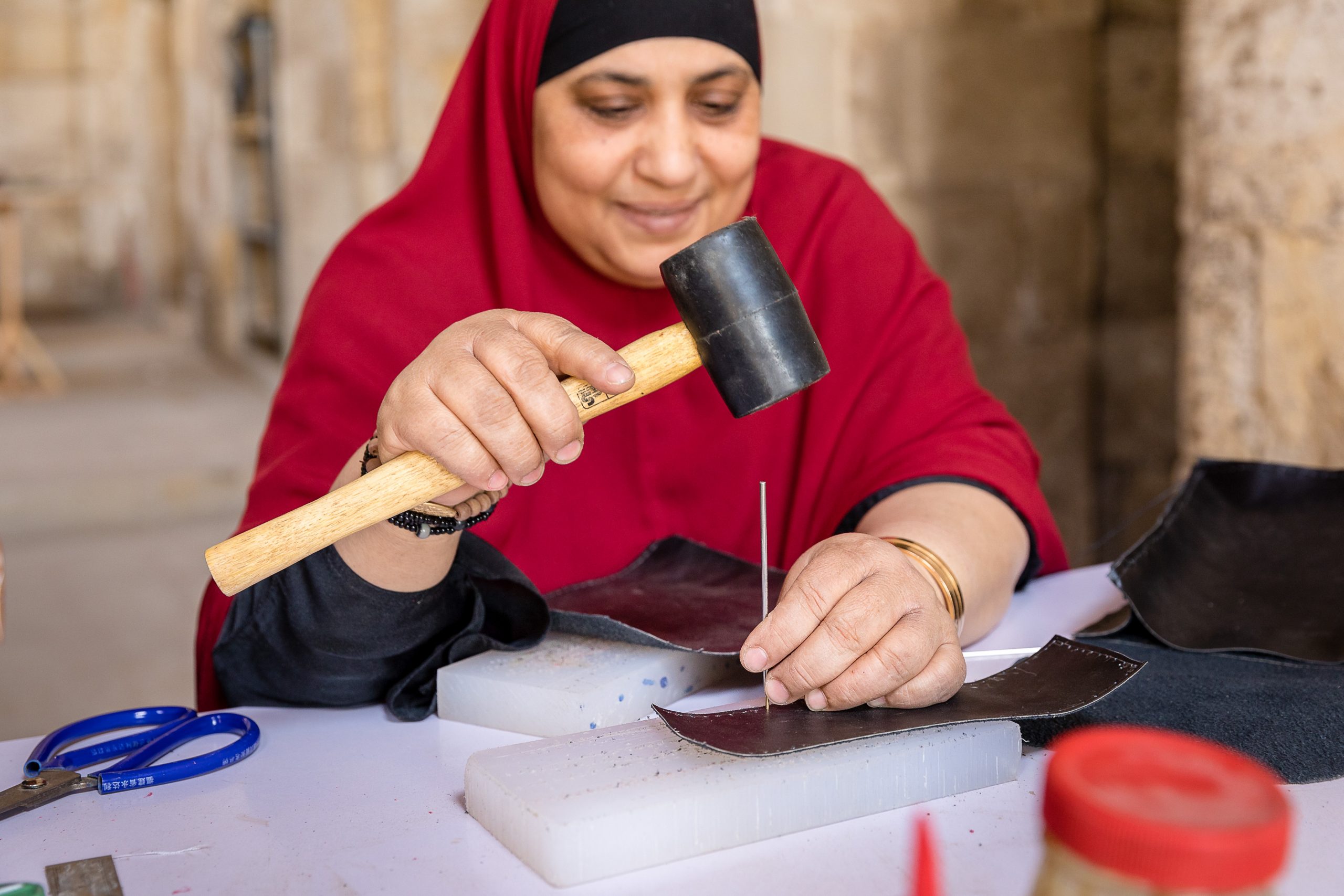Society
9.18.2020
Mishka, a leather and jewelry brand handmade by local women in historic Cairo

Participer au développement social et local à travers des accessoires et des bijoux est la mission que remplit Mishka, une marque égyptienne qui travaille avec les femmes du quartier pauvre de la “cité des morts” au Caire. Rencontre avec Agnieszka Dobrowolska, architecte à Archinos et responsable du projet.
Created as a part of a bigger project carried out by ARCHiNOS, an Egyptian design and architecture conservation firm in the Sultan Qaitbay area of the ‘City of the Dead’ in Cairo , Mishka is an EU-funded project which combines preservation of historic monuments with social development programme and promotion of arts and culture.
With its not-for-profit sister organisation, Sultan Foundation, Archinos works since 2018 with the local women of Cairo to develop their skills in jewelry and accessories making, made out of typical Sultan Qatbey area materials and patterns.
And the brand is already a success with a lot of customers from the upper and middle class Egyptians plus international clients.

What is the idea behind Mishka ?
We listened to the stories of local women of the poor district of the city of the dead and it appeared that they needed some kind of income, but also that they sought a work that is interesting, creative while it could be done in the neighbourhood. Thus, the idea of training on the job was born. I got help from a renown leather designer from London, Bill Amberg, who came to Cairo and trained the initial group of women in leather craft, all handmade. This was a very successful encounter and we named it MISHKA, a lantern, light in Arabic, as it brings light and new life into the lives of women from the Qaitbey area. As we are seeking sustainability and income for the women, we pushed for MISHKA to become a brand on its own and get it to the Egyptian market. Along the way, we got some help from donors, initially Alfanar foundation, later – Drosos foundation. This allowed us to expand, have a proper business plan, study the market, get new ideas, designs, materials, and so it continues.

How did you manage to find and attract women from the city of the dead to join the adventure?
Once the initiative was launched, word of the mouth spread and they came to us. In fact, we have a waiting list now of women who want to be trained and join the initiative. They are from all walks of life: from daughters of grave guards who were born there to university-educated women. We carry training sessions for six weeks in different techniques and later, while they produce, we carry on very careful quality control. After the initial training and some trial-and-error period, it appeared that the design and the products gained a reasonable group of fans and buyers, mostly outside of Egypt.
What is the manufacture process?
Initially we strictly followed Bills’ designs. Then, we tried quite a few local designers but it was not successful. When our production manager, Heba al-Nagga, joined, she designed our first jewelry pieces and we started the jewelry line. Eventually, I started to design the pieces myself drawing from my background as an architect and experience in graphic, architectural, interior and museum design. I am also assisted by Heba who is great in handiwork, and Eslam Bin Na’eb from ARCHiNOS who has a great feeling for Islamic geometry. But we are constantly expanding, embarking on collaboration with various artists and seeking new materials and ideas. But what always leads our inspiration is this contemporary, elegant and minimal edge to our designs while looking at the past.

Your latest collection “Four Elements” is inspired by the Mamluk architecture. Why such a choice?
The splendid Mamluk architecture of the complex of Sultan Qaitbey, which is not only our neighbourhood, but also one of the world-known monuments of mediaeval Cairo. The geometric and floral patterns, architectural forms of the Madrasa of Qaitbay, Mausoleum of al-Gulshani and other mausolea of the ‘City of the Dead’ offer endless forms and combinations while being so proportionate and simple. Also, like most of Mamluk architecture, these edifices play with light and shadow, use water, provide ventilation and are steadily rooted here. Thus, our latest collection is titled Four Elements, in tribute to the patterns of four different mausoleums from the ‘City of the Dead’ including Qaitbey and representing air, water, fire and earth.

What kind of materials do you use ?
All natural and genuine materials that are present in Mamluk architecture of the neighbourhood, as well as those used by the traditional craftsmen who live and work in the area. We use brass and copper, sterling silver, we silver-and gold-plate some pieces. We use leather and wood, and recently we started to play with mosaics and hand-blown glass from the neighbourhood, as well as stone.
popular

